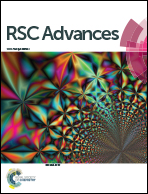A minimum energy optimization approach for simulations of the droplet wetting modes using the cellular Potts model
Abstract
Wetting modes of a droplet on a periodical grooved surface were simulated by using the Cellular Potts Model (CPM). An optimization approach based on the Synthesis Minimum Energy (SME), which is defined as the lowest energy of the simulation system, was proposed for determining the droplet wetting modes. The influence of the fluctuation parameter (T) was discussed. The results showed that the SME optimization approach increased the accuracy of the wetting mode simulation. For the values of T used in the SME, an increase in the range of T and a decrease in the step size of T will not only cause an increase in the accuracy of the SME but also will cause an increase in the total consumption of calculation time and a decrease in the ability of accuracy improvement. A high value of the fluctuation parameter T generated the Cassie mode transition for the droplet. With an increase in the pillar height, the droplet wetting mode transited from Wenzel mode to Cassie mode, while it transited from Cassie mode to Wenzel mode with an increase in the interpillar distance.



 Please wait while we load your content...
Please wait while we load your content...